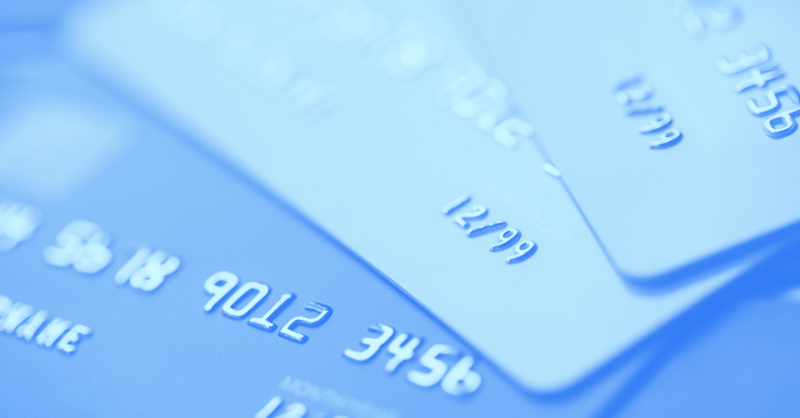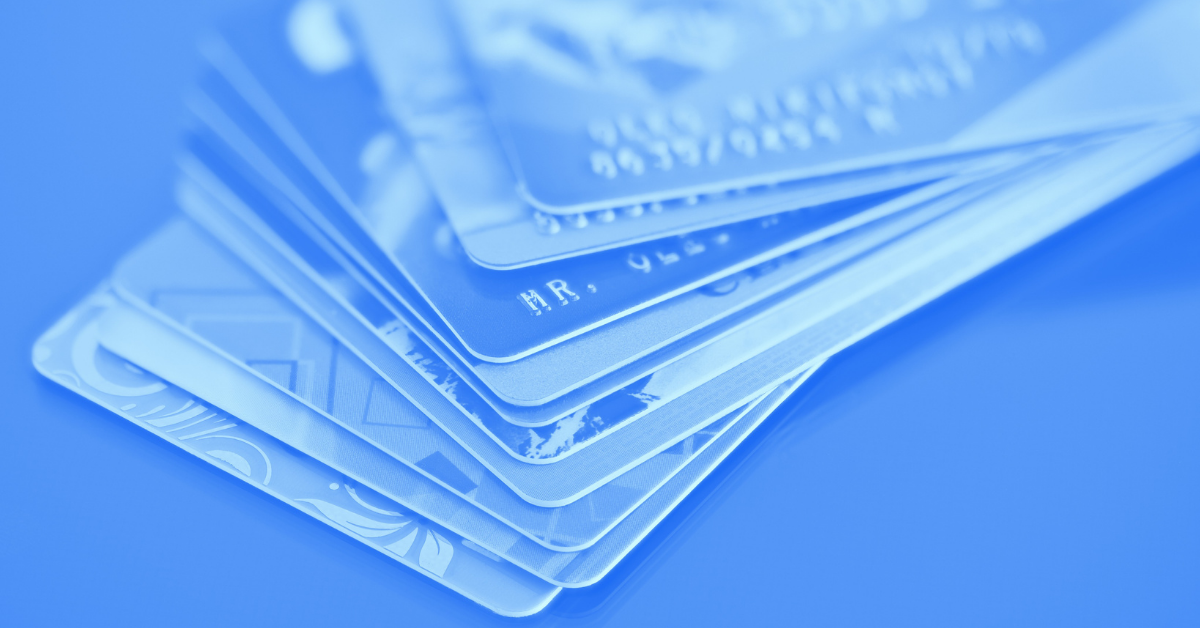Rewards Credit Cards: What You Should Know
Share this

3.5 MIN READ
A good rewards credit card—one that offers you miles or points or cash every time you make a purchase—is an easy way to increase your income by a small amount. Once you have the card, you're making money on things you would be purchasing anyway, so why not?
"Why not", indeed—let's start with that.
When Not to Get a Rewards Credit Card
The answer is pretty simple: if you find yourself often (or even occasionally) not paying down the entire balance on your card, avoid them. The interest rates on these cards are astronomically high, with an average in 2018 of around 17%! American Express Blue Cash used to be an exception, with an interest rate between 7-8% once you'd had one for a few years, but as of 2018, they've raised their rates to be "competitive" (translation: "painfully high"). You don't have to do a lot of heavy computation to see that a 17% interest rate wipes out several months of 2% rewards—and that's assuming you pay off the balance after only one month.
But if you've got the liquidity to pay off your credit card every month, year in year out without fail, then a rewards card is indeed an easy way to put some money in your pocket. Not necessarily a lot, but some!
How to Find a Good Rewards Card
Next up: which rewards card to use? Miles, points, cash back? Should you use multiple, or just one? Below are some pointers to keep in mind.
As of 2018, aim for 2% cash back on general purchases. While many cards will give e.g. 5% cash back in certain categories, 2% on general purchases has been the upper limit for many years. You'll find that most cards offer 1% or 1.5%, but a few will offer 2%—though with caveats. For example the Citi Double Cash card will give you 1% cash back immediately, plus another 1% when you pay off the card; the Capital One Venture card will give you 1% cash back and another 1% if you apply that to travel purchases made with the card. Schwab used to offer a 2% card that deposited the funds in an investment acount, but it's been discontinued. You get the idea, though—2% cards generally come with a wrinkle, so look carefully at the terms before you apply.
Cash back (in some form) is generally better than airline- or hotel-specific miles or points. Some credit cards give you one "mile" or some other reward unit per dollar spent, as long as you use the reward with a specific airline or hotel chain. For some reason, a lot of people are big on these, but generally speaking, not only are they less flexible, but you often don't get as much as you would with a plain old 2% cash back card. You can go check out The Points Guy for their monthly valuations; your mileage may vary if you're a business traveler who faithfully uses a particular airline or hotel chain, but a mile or hotel point is most often worth around 1.5 cents per dollar. Note: this doesn't apply to cards which offer "miles" that aren't really frequent flyer miles. Cards for which each mile represents one cent (or two or three) that can be applied towards the purchase of an airline ticket are really just "cash back cards with a wrinkle", and as I said above, those can be solid.
Watch out for annual fees. Cards with better rewards often-but-not-always have annual fees. They're not necessarily Evil Incarnate—a $95 fee for a card that gives you $700 per year is a fair trade—but check for them before pulling the trigger.
If you really want to optimize, look at the categories you spend the most in and do some number-crunching. Having just one credit card that offers 2% back on everything is perfectly fine. If you like messing with this sort of thing, though (and I'll admit it—I do), make sure and do some analysis before buying another card on top of it. Similar to optimizing your savings, set a monthly extra income threshold, below which an additional card just isn't worth your time. Find your highest spending categories, look for cards that give you 3% (or 5-6%!) back in those, and see if the extra 1% (or 4-5%) is higher than the threshold, taking the annual fee into account.
For example, let's say your family spends $800/month on groceries. Looking at the American Express Blue Cash Preferred card, it gives 6% back on groceries. That might be good, right? Be sure to read the reviews and fine print, though—there's a $95 annual fee, and the 6% back caps out after $6,000 in purchases for the year—after that it's 1%, so you may as well use your standard 2% card for groceries after you hit the cap. So that's $360 for that card for the year, minus $95 is $265. Let's say that otherwise your 2% back card has no fee, which means that using it for that $6,000 would get you $120 per year. The extra gain from the AmEx is then $145, or about $10/month. And that's assuming you remember to switch back to your 2% card after you hit the cap—if you use your AmEx for the remaining (($800*12) - $6,000=)$3,600, then the extra gain from the AmEx drops to $109, about $9/month.
Now, that might be above your don't-care threshold—especially if you just find optimizing credit cards fund—but it's always worth your time to run the numbers before pulling the trigger.
What Effect Does a New Card Have on Your Credit?
You thoughtful readers are asking: won't applying for a new card lower my credit rating? That's a good point, and I have a couple of responses.
Applying for a new credit card will temporarily lower your credit score. Two of the items that affect your credit rating are "hard inquiries" (credit checks by companies that are actively looking to issue credit) and "credit history" (the average age of your various credit lines). Applying for a new credit card triggers a hard inquiry, and of course this brand new card will lower the average age of your credit lines, so your rating will go down. However, these two items are "low impact". Also, the hit is temporary, as hard inquiries fall off of your score after a year, and your credit history will age naturally with time. Also also, you are increasing your overall credit, which decreases your credit utilization (assuming you don't start splurging when you buy the card), which in turn raises your credit score. Also also also, you're increasing the number of credit lines, which also raises your credit score. All in all, the net impact I've generally seen is slightly negative, but only slightly (read: a drop of less than 5 points*).
You don't have to guess at the effect on your particular credit score. Credit Karma offers an excellent resource called the Credit Simulator. Simply tell it that you're looking at a new card (or any one of a number of other situations), give it a new limit (so it can calculate the effect on utilization, per above), and it'll estimate the impact on your credit rating and how long it will take to recover. And yes, Credit Karma is free, albeit with ads—you should be using it (or something like it) to monitor your credit anyway!
Don't close your old credit card. Closing lines of credit reduces the number of credit lines and increases your credit utilization, and there's really no need to. Simply set the card on auto-pay and move every payment to the new card except one subscription. The subscription will keep the card active; otherwise, the credit card company is likely to close the card account without notice.
Looking at all of this, you may be saying, "you know, this isn't really worth moving to a new card for an extra 2% back". And that is completely reasonable—especially if you value your time highly! So what do you think? Have an interesting situation, question, or idea? Don't hesitate to leave a comment or send an e-mail!
Note: I'm not associated with or sponsored by any of the products above; I'm using them either as common examples (in the case of credit cards—you'll notice I've linked to their reviews, not the card page itself) or products I personally recommend (in the case of Credit Karma).
*Yeah, grammar police, I went there.
This article originally appeared on Seaborn Financial, LLC
 About the Author
About the Author
Britton Gregory is an engineer-turned-financial-planner in Austin, Texas. As such, he shies away from suits and commissions, and instead tends towards blue jeans, data-driven analysis, and a fee-only approach to financial planning.
Do you know XYPN advisors provide virtual services? They can work with clients in any state! View our Find-an-Advisor Portal
Share this
Subscribe by email
You May Also Like
These Related Stories

Credit Strategies

Why I Don't Own a Credit Card



